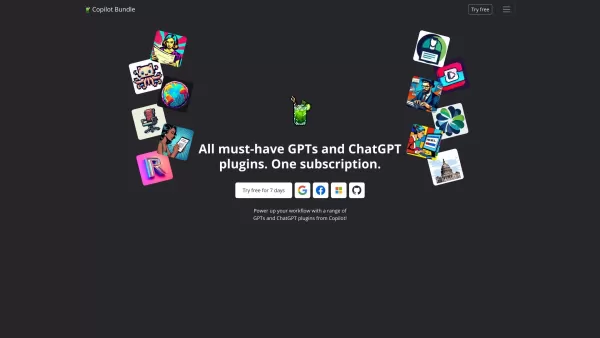Master Mud Runs: Your Ultimate Guide to Overcoming Obstacle Course Challenges

 April 24, 2025
April 24, 2025

 DavidCarter
DavidCarter

 0
0
Obstacle course races (OCRs) are an exhilarating mix of endurance, strength, and mental grit that can captivate both seasoned athletes and beginners seeking a new challenge. These races offer a unique, unforgettable experience, pushing participants to their limits and beyond. In this comprehensive guide, you'll find all the knowledge and tips you need to prepare for and conquer your next OCR, from navigating mud crawls to mastering rope climbs.
Key Points to Remember
- Effective OCR training blends cardio, strength, and obstacle-specific exercises.
- The right gear, like shoes and clothing, can make a big difference in your performance.
- Mental preparation and a positive mindset are vital for tackling tough obstacles.
- Proper nutrition and hydration fuel your body before, during, and after the race.
- Understanding race etiquette and safety guidelines ensures a fun and smooth experience.
Preparing for Your Obstacle Course Race
Understanding Obstacle Course Races
Obstacle course races have surged in popularity, offering a thrilling alternative to traditional running events. These races typically span anywhere from 3 to 12+ miles, packed with various obstacles designed to test your physical and mental boundaries. From mud pits and walls to rope climbs and barbed wire crawls, OCRs are unpredictable and exhilarating. The sense of achievement after overcoming each challenge is what draws people in—whether it's the camaraderie, the physical test, or simply the fun of it all. Understanding the essence of OCRs is your first step to success.
Key elements of obstacle course races include:
- Distance: Races come in different lengths to suit various fitness levels.
- Obstacles: Courses feature a diverse array of obstacles, demanding strength, agility, and problem-solving skills.
- Terrain: OCRs often take place on challenging terrains, adding to the overall difficulty.
- Community: There's a strong sense of community among participants, often helping each other out.

Effective OCR Training Strategies
Preparing for an OCR requires a well-rounded training plan that targets different aspects of fitness. Your routine should include cardio, strength training, and exercises specific to the obstacles you'll encounter. Consistency is key to building the endurance and strength needed to tackle the course.
Here's how you can break down your training:
- Cardio: Activities like running, swimming, and cycling boost your cardiovascular endurance. Aim for 3-4 sessions a week, gradually increasing intensity and duration.
- Strength Training: Focus on compound movements such as squats, deadlifts, push-ups, and pull-ups to build overall strength. Include these workouts 2-3 times a week, targeting different muscle groups.
- Grip Strength: Many obstacles demand strong grip strength. Incorporate exercises like dead hangs, farmer's walks, and pull-up variations. Consider using hand grippers and resistance bands to further strengthen your grip.
- Obstacle-Specific Training: Practice skills needed for common obstacles like rope climbing, wall scaling, and crawling. Use local OCR training facilities or create your own backyard course.
- Interval Training: Boost your speed and power with interval training, alternating between high-intensity bursts and periods of rest or low-intensity activity.
- Endurance Runs: Gradually build up your long runs to prepare for the race distance. Simulate race conditions by running on trails and incorporating obstacles along the way.
Consider working with a certified OCR coach to tailor a training plan to your fitness level and race goals.

Essential Gear and Apparel for OCR
The right gear can significantly enhance your performance and comfort during an OCR. Choose clothing and shoes that are durable, lightweight, and designed to handle mud, water, and rugged terrain.
Here's what you should consider:
- OCR Shoes: Invest in shoes designed specifically for obstacle course racing. They should have aggressive tread for traction, drainage holes to prevent waterlogging, and a sturdy build.
- Compression Clothing: Compression shirts and pants can improve blood flow, reduce muscle fatigue, and protect against abrasions. Opt for moisture-wicking fabrics to stay dry and comfortable.
- Gloves: Gloves provide extra grip and protection, particularly useful for rope climbs and wall obstacles. Choose lightweight, durable, and breathable gloves.
- Socks: Moisture-wicking socks that fit snugly can prevent blisters. Consider compression socks for added support and improved blood flow.
- Hydration Pack: A hydration pack lets you carry water and essentials like energy gels and first-aid supplies. Pick one that's comfortable, lightweight, and easy to access.
- Sunscreen and Insect Repellent: Apply sunscreen and insect repellent before the race to protect your skin. Choose waterproof and sweat-resistant products.
- Race Timing Chip: Securely attach the timing chip to your wrist or ankle, ensuring it's snug but comfortable. Double-check before the start to avoid losing it.
- Headband or Bandana: A headband keeps sweat out of your eyes, while a bandana can protect your face from mud and sun.

Nutrition and Hydration Strategies for Peak Performance
Proper nutrition and hydration are crucial for fueling your body throughout an OCR. Your diet should be rich in carbohydrates, protein, and healthy fats to provide sustained energy and support muscle recovery.
Here are some tips to keep in mind:
- Pre-Race Meal: Eat a balanced meal 2-3 hours before the race, focusing on complex carbohydrates and lean protein. Think oatmeal with fruit and nuts or a chicken breast with sweet potato.
- During-Race Fuel: Consume energy gels, chews, or sports drinks every 30-45 minutes to keep your energy levels up. Choose products that are easy to digest and provide quick carbs.
- Hydration: Drink plenty of water or sports drinks before, during, and after the race. Aim for 16-20 ounces of water 2-3 hours before the start, and 4-8 ounces every 15-20 minutes during the race.
- Post-Race Recovery: Within 30-60 minutes after the race, replenish glycogen and repair muscle tissue with a meal or snack containing carbs and protein. A protein shake with fruit or a turkey sandwich on whole-wheat bread works well.
- Electrolyte Balance: Replace lost electrolytes with sports drinks or electrolyte tablets during and after the race. This helps maintain muscle function and prevents cramping.
Avoid trying new foods or drinks on race day to prevent digestive issues. Practice your nutrition and hydration strategies during training to ensure they work for you.

Mastering the Mental Game
Mental Preparation Techniques for OCR
Obstacle course races are as much a mental challenge as they are a physical one. Building mental resilience and maintaining a positive mindset can help you conquer obstacles and stay motivated throughout the race.
Here are some techniques to prepare mentally:
- Visualization: Picture yourself successfully navigating each obstacle, focusing on the positive feelings and sensations. This can boost your confidence and reduce anxiety.
- Positive Self-Talk: Replace negative thoughts with positive affirmations like "I can do this" or "I am strong and capable."
- Goal Setting: Set realistic goals for the race, focusing on the process rather than the outcome. Break the course into manageable sections and celebrate each achievement.
- Mindfulness: Practice mindfulness techniques such as meditation or deep breathing to stay present and focused. This helps manage stress and keep a clear head.
- Embrace the Challenge: See each obstacle as an opportunity to push your limits and grow. Remember why you signed up and focus on the positive aspects of the experience.

How to Use
Rope Climbing Technique
Mastering the rope climb is crucial for many OCRs. Using the right technique can save energy and improve efficiency. Here's how to do it:
- The J-Hook Method: Secure the rope with your feet, forming a 'J' shape with your dominant foot over the rope and your other foot pressing down to lock it in place.
- Alternating Hand Grip: Reach high and alternate your hand positions to pull yourself up. Keep your body close to the rope to conserve energy.
- Leg Push: Use your legs to push yourself upwards as you alternate your hand grips. This synchronized movement saves energy.
- Controlled Descent: Slide down slowly, maintaining a firm grip and using your legs for control to avoid rope burn and unnecessary strain.

Wall Scaling Strategies
Efficient wall scaling requires both technique and strength. Here are some strategies to consider:
- Assess the Wall: Evaluate the wall's height and surface to plan your approach. Look for any foot or handholds.
- The Run-Up: Approach the wall with enough speed to generate momentum.
- Plant and Grab: Plant one foot high on the wall, reach for the top with your hands, and pull yourself up, using the momentum from your run-up.
- The Mantle: Once your hands are secure, push your body up and over the wall, using a 'mantle' motion similar to getting out of a pool.

Mud Crawl Tactics
Efficient mud crawling saves energy and minimizes exposure to harsh conditions. Here's how to do it:
- Low Profile: Keep your body as low as possible to avoid barbed wire and reduce resistance from the mud.
- Elbow and Knee Crawl: Use your elbows and knees to propel yourself forward, keeping your core engaged for stability.
- Alternate Sides: Alternate which side you lead with to distribute the workload evenly.
- Controlled Breathing: Maintain steady breathing to manage your exertion and stay focused.
- Protective Gear: Wear appropriate gear like gloves and knee pads to avoid cuts and bruises.

Pros and Cons of Obstacle Course Racing
Pros
- Full-body Workout: Engages various muscle groups through running, climbing, and carrying.
- Mental Toughness: Builds resilience and problem-solving skills.
- Community Spirit: Fosters camaraderie and mutual support.
- Variety: Offers a refreshing change from traditional running.
- Sense of Accomplishment: Provides a satisfying feeling of overcoming challenges.
Cons
- Risk of Injury: Involves physical challenges that may lead to strains, sprains, or cuts.
- Weather Dependent: Can be affected by rain, mud, or extreme temperatures.
- Cost: Race fees, travel, and gear can add up.
- Time Commitment: Requires dedicated training and preparation.
- Accessibility: May not be available in all locations.
Frequently Asked Questions (FAQ)
What is the best way to prepare for an obstacle course race if I'm a beginner?
If you're new to OCR, start by building a solid base of cardiovascular endurance and strength. Include running, swimming, or cycling in your routine, along with strength training exercises like squats, push-ups, and pull-ups. Gradually increase the intensity and duration of your workouts. Practice obstacle-specific skills, such as rope climbing and wall scaling, at a local OCR training facility or by setting up your own backyard obstacle course. Focus on consistency and listen to your body to avoid injuries.
How do I choose the right OCR shoes?
When selecting OCR shoes, look for models designed specifically for obstacle course racing. These shoes typically have aggressive tread for traction, drainage holes to prevent waterlogging, and durable construction to withstand the course's rigors. Try on different brands and styles to find the best fit for your feet. Read online reviews and seek recommendations from experienced OCR athletes.
What should I eat and drink during an obstacle course race?
During an OCR, consume energy gels, chews, or sports drinks every 30-45 minutes to maintain your energy levels. Choose products that are easy to digest and provide quick carbs. Drink plenty of water or sports drinks to stay hydrated, aiming for 4-8 ounces every 15-20 minutes. Avoid trying new foods or drinks on race day to prevent digestive issues.
Related Questions
How can I improve my grip strength for OCR obstacles?
Grip strength is essential for many OCR obstacles like rope climbs, monkey bars, and rig crossings. To improve your grip strength, incorporate exercises like dead hangs, farmer's walks, and pull-up variations into your routine. Use grip-strengthening tools like hand grippers and resistance bands. Consistency is key, so aim to include these exercises 2-3 times a week.
What are some common mistakes to avoid during an obstacle course race?
During an OCR, avoid common pitfalls that can hinder your performance and increase injury risk. These include starting too fast, neglecting hydration and nutrition, skipping warm-up and cool-down routines, and not pacing yourself properly. Avoid trying new techniques or equipment on race day, and always follow race rules and safety guidelines. Listen to your body and take breaks when needed to avoid overexertion.
Are obstacle course races safe for everyone?
While OCRs can be a fun and challenging way to test your fitness, they come with risks. Consult with your doctor before participating, especially if you have any underlying health conditions. Choose a race that matches your fitness level and experience. Follow all race rules and safety guidelines, and listen to your body to avoid overexertion. Training with a friend or group can provide support and assistance if needed. However, OCRs are generally suitable for most people of all fitness levels!
Related article
 AI-Powered Vibe Coding: Revolutionizing Software Engineering's Future
The world of software engineering is undergoing a rapid transformation, driven by the advancements in artificial intelligence. A new phenomenon known as "vibe coding" is emerging, where developers harness the power of AI tools to generate code and boost productivity. This article delves into the asc
AI-Powered Vibe Coding: Revolutionizing Software Engineering's Future
The world of software engineering is undergoing a rapid transformation, driven by the advancements in artificial intelligence. A new phenomenon known as "vibe coding" is emerging, where developers harness the power of AI tools to generate code and boost productivity. This article delves into the asc
 Red Hat on open, small language models for responsible, practical AI
Geopolitical Influences on AI Development and UsageAs global events continue to shape our world, it's inevitable that they impact the technology sector, particularly the AI market. This influence extends to how AI is developed, its methodologies, and its application within enterprises. The current l
Red Hat on open, small language models for responsible, practical AI
Geopolitical Influences on AI Development and UsageAs global events continue to shape our world, it's inevitable that they impact the technology sector, particularly the AI market. This influence extends to how AI is developed, its methodologies, and its application within enterprises. The current l
 OPPO Reno 12F's AI Eraser: Simplifying Flawless Photo Editing
Ever since its launch, the OPPO Reno 12F has been turning heads as OPPO's first smartphone to embrace AI technology, with its standout feature, the OPPO AI Eraser, leading the charge. This innovative tool is set to transform how we edit photos by allowing users to effortlessly remove unwanted elemen
Comments (0)
0/200
OPPO Reno 12F's AI Eraser: Simplifying Flawless Photo Editing
Ever since its launch, the OPPO Reno 12F has been turning heads as OPPO's first smartphone to embrace AI technology, with its standout feature, the OPPO AI Eraser, leading the charge. This innovative tool is set to transform how we edit photos by allowing users to effortlessly remove unwanted elemen
Comments (0)
0/200

 April 24, 2025
April 24, 2025

 DavidCarter
DavidCarter

 0
0
Obstacle course races (OCRs) are an exhilarating mix of endurance, strength, and mental grit that can captivate both seasoned athletes and beginners seeking a new challenge. These races offer a unique, unforgettable experience, pushing participants to their limits and beyond. In this comprehensive guide, you'll find all the knowledge and tips you need to prepare for and conquer your next OCR, from navigating mud crawls to mastering rope climbs.
Key Points to Remember
- Effective OCR training blends cardio, strength, and obstacle-specific exercises.
- The right gear, like shoes and clothing, can make a big difference in your performance.
- Mental preparation and a positive mindset are vital for tackling tough obstacles.
- Proper nutrition and hydration fuel your body before, during, and after the race.
- Understanding race etiquette and safety guidelines ensures a fun and smooth experience.
Preparing for Your Obstacle Course Race
Understanding Obstacle Course Races
Obstacle course races have surged in popularity, offering a thrilling alternative to traditional running events. These races typically span anywhere from 3 to 12+ miles, packed with various obstacles designed to test your physical and mental boundaries. From mud pits and walls to rope climbs and barbed wire crawls, OCRs are unpredictable and exhilarating. The sense of achievement after overcoming each challenge is what draws people in—whether it's the camaraderie, the physical test, or simply the fun of it all. Understanding the essence of OCRs is your first step to success.
Key elements of obstacle course races include:
- Distance: Races come in different lengths to suit various fitness levels.
- Obstacles: Courses feature a diverse array of obstacles, demanding strength, agility, and problem-solving skills.
- Terrain: OCRs often take place on challenging terrains, adding to the overall difficulty.
- Community: There's a strong sense of community among participants, often helping each other out.

Effective OCR Training Strategies
Preparing for an OCR requires a well-rounded training plan that targets different aspects of fitness. Your routine should include cardio, strength training, and exercises specific to the obstacles you'll encounter. Consistency is key to building the endurance and strength needed to tackle the course.
Here's how you can break down your training:
- Cardio: Activities like running, swimming, and cycling boost your cardiovascular endurance. Aim for 3-4 sessions a week, gradually increasing intensity and duration.
- Strength Training: Focus on compound movements such as squats, deadlifts, push-ups, and pull-ups to build overall strength. Include these workouts 2-3 times a week, targeting different muscle groups.
- Grip Strength: Many obstacles demand strong grip strength. Incorporate exercises like dead hangs, farmer's walks, and pull-up variations. Consider using hand grippers and resistance bands to further strengthen your grip.
- Obstacle-Specific Training: Practice skills needed for common obstacles like rope climbing, wall scaling, and crawling. Use local OCR training facilities or create your own backyard course.
- Interval Training: Boost your speed and power with interval training, alternating between high-intensity bursts and periods of rest or low-intensity activity.
- Endurance Runs: Gradually build up your long runs to prepare for the race distance. Simulate race conditions by running on trails and incorporating obstacles along the way.
Consider working with a certified OCR coach to tailor a training plan to your fitness level and race goals.

Essential Gear and Apparel for OCR
The right gear can significantly enhance your performance and comfort during an OCR. Choose clothing and shoes that are durable, lightweight, and designed to handle mud, water, and rugged terrain.
Here's what you should consider:
- OCR Shoes: Invest in shoes designed specifically for obstacle course racing. They should have aggressive tread for traction, drainage holes to prevent waterlogging, and a sturdy build.
- Compression Clothing: Compression shirts and pants can improve blood flow, reduce muscle fatigue, and protect against abrasions. Opt for moisture-wicking fabrics to stay dry and comfortable.
- Gloves: Gloves provide extra grip and protection, particularly useful for rope climbs and wall obstacles. Choose lightweight, durable, and breathable gloves.
- Socks: Moisture-wicking socks that fit snugly can prevent blisters. Consider compression socks for added support and improved blood flow.
- Hydration Pack: A hydration pack lets you carry water and essentials like energy gels and first-aid supplies. Pick one that's comfortable, lightweight, and easy to access.
- Sunscreen and Insect Repellent: Apply sunscreen and insect repellent before the race to protect your skin. Choose waterproof and sweat-resistant products.
- Race Timing Chip: Securely attach the timing chip to your wrist or ankle, ensuring it's snug but comfortable. Double-check before the start to avoid losing it.
- Headband or Bandana: A headband keeps sweat out of your eyes, while a bandana can protect your face from mud and sun.

Nutrition and Hydration Strategies for Peak Performance
Proper nutrition and hydration are crucial for fueling your body throughout an OCR. Your diet should be rich in carbohydrates, protein, and healthy fats to provide sustained energy and support muscle recovery.
Here are some tips to keep in mind:
- Pre-Race Meal: Eat a balanced meal 2-3 hours before the race, focusing on complex carbohydrates and lean protein. Think oatmeal with fruit and nuts or a chicken breast with sweet potato.
- During-Race Fuel: Consume energy gels, chews, or sports drinks every 30-45 minutes to keep your energy levels up. Choose products that are easy to digest and provide quick carbs.
- Hydration: Drink plenty of water or sports drinks before, during, and after the race. Aim for 16-20 ounces of water 2-3 hours before the start, and 4-8 ounces every 15-20 minutes during the race.
- Post-Race Recovery: Within 30-60 minutes after the race, replenish glycogen and repair muscle tissue with a meal or snack containing carbs and protein. A protein shake with fruit or a turkey sandwich on whole-wheat bread works well.
- Electrolyte Balance: Replace lost electrolytes with sports drinks or electrolyte tablets during and after the race. This helps maintain muscle function and prevents cramping.
Avoid trying new foods or drinks on race day to prevent digestive issues. Practice your nutrition and hydration strategies during training to ensure they work for you.

Mastering the Mental Game
Mental Preparation Techniques for OCR
Obstacle course races are as much a mental challenge as they are a physical one. Building mental resilience and maintaining a positive mindset can help you conquer obstacles and stay motivated throughout the race.
Here are some techniques to prepare mentally:
- Visualization: Picture yourself successfully navigating each obstacle, focusing on the positive feelings and sensations. This can boost your confidence and reduce anxiety.
- Positive Self-Talk: Replace negative thoughts with positive affirmations like "I can do this" or "I am strong and capable."
- Goal Setting: Set realistic goals for the race, focusing on the process rather than the outcome. Break the course into manageable sections and celebrate each achievement.
- Mindfulness: Practice mindfulness techniques such as meditation or deep breathing to stay present and focused. This helps manage stress and keep a clear head.
- Embrace the Challenge: See each obstacle as an opportunity to push your limits and grow. Remember why you signed up and focus on the positive aspects of the experience.

How to Use
Rope Climbing Technique
Mastering the rope climb is crucial for many OCRs. Using the right technique can save energy and improve efficiency. Here's how to do it:
- The J-Hook Method: Secure the rope with your feet, forming a 'J' shape with your dominant foot over the rope and your other foot pressing down to lock it in place.
- Alternating Hand Grip: Reach high and alternate your hand positions to pull yourself up. Keep your body close to the rope to conserve energy.
- Leg Push: Use your legs to push yourself upwards as you alternate your hand grips. This synchronized movement saves energy.
- Controlled Descent: Slide down slowly, maintaining a firm grip and using your legs for control to avoid rope burn and unnecessary strain.

Wall Scaling Strategies
Efficient wall scaling requires both technique and strength. Here are some strategies to consider:
- Assess the Wall: Evaluate the wall's height and surface to plan your approach. Look for any foot or handholds.
- The Run-Up: Approach the wall with enough speed to generate momentum.
- Plant and Grab: Plant one foot high on the wall, reach for the top with your hands, and pull yourself up, using the momentum from your run-up.
- The Mantle: Once your hands are secure, push your body up and over the wall, using a 'mantle' motion similar to getting out of a pool.

Mud Crawl Tactics
Efficient mud crawling saves energy and minimizes exposure to harsh conditions. Here's how to do it:
- Low Profile: Keep your body as low as possible to avoid barbed wire and reduce resistance from the mud.
- Elbow and Knee Crawl: Use your elbows and knees to propel yourself forward, keeping your core engaged for stability.
- Alternate Sides: Alternate which side you lead with to distribute the workload evenly.
- Controlled Breathing: Maintain steady breathing to manage your exertion and stay focused.
- Protective Gear: Wear appropriate gear like gloves and knee pads to avoid cuts and bruises.

Pros and Cons of Obstacle Course Racing
Pros
- Full-body Workout: Engages various muscle groups through running, climbing, and carrying.
- Mental Toughness: Builds resilience and problem-solving skills.
- Community Spirit: Fosters camaraderie and mutual support.
- Variety: Offers a refreshing change from traditional running.
- Sense of Accomplishment: Provides a satisfying feeling of overcoming challenges.
Cons
- Risk of Injury: Involves physical challenges that may lead to strains, sprains, or cuts.
- Weather Dependent: Can be affected by rain, mud, or extreme temperatures.
- Cost: Race fees, travel, and gear can add up.
- Time Commitment: Requires dedicated training and preparation.
- Accessibility: May not be available in all locations.
Frequently Asked Questions (FAQ)
What is the best way to prepare for an obstacle course race if I'm a beginner?
If you're new to OCR, start by building a solid base of cardiovascular endurance and strength. Include running, swimming, or cycling in your routine, along with strength training exercises like squats, push-ups, and pull-ups. Gradually increase the intensity and duration of your workouts. Practice obstacle-specific skills, such as rope climbing and wall scaling, at a local OCR training facility or by setting up your own backyard obstacle course. Focus on consistency and listen to your body to avoid injuries.
How do I choose the right OCR shoes?
When selecting OCR shoes, look for models designed specifically for obstacle course racing. These shoes typically have aggressive tread for traction, drainage holes to prevent waterlogging, and durable construction to withstand the course's rigors. Try on different brands and styles to find the best fit for your feet. Read online reviews and seek recommendations from experienced OCR athletes.
What should I eat and drink during an obstacle course race?
During an OCR, consume energy gels, chews, or sports drinks every 30-45 minutes to maintain your energy levels. Choose products that are easy to digest and provide quick carbs. Drink plenty of water or sports drinks to stay hydrated, aiming for 4-8 ounces every 15-20 minutes. Avoid trying new foods or drinks on race day to prevent digestive issues.
Related Questions
How can I improve my grip strength for OCR obstacles?
Grip strength is essential for many OCR obstacles like rope climbs, monkey bars, and rig crossings. To improve your grip strength, incorporate exercises like dead hangs, farmer's walks, and pull-up variations into your routine. Use grip-strengthening tools like hand grippers and resistance bands. Consistency is key, so aim to include these exercises 2-3 times a week.
What are some common mistakes to avoid during an obstacle course race?
During an OCR, avoid common pitfalls that can hinder your performance and increase injury risk. These include starting too fast, neglecting hydration and nutrition, skipping warm-up and cool-down routines, and not pacing yourself properly. Avoid trying new techniques or equipment on race day, and always follow race rules and safety guidelines. Listen to your body and take breaks when needed to avoid overexertion.
Are obstacle course races safe for everyone?
While OCRs can be a fun and challenging way to test your fitness, they come with risks. Consult with your doctor before participating, especially if you have any underlying health conditions. Choose a race that matches your fitness level and experience. Follow all race rules and safety guidelines, and listen to your body to avoid overexertion. Training with a friend or group can provide support and assistance if needed. However, OCRs are generally suitable for most people of all fitness levels!
 AI-Powered Vibe Coding: Revolutionizing Software Engineering's Future
The world of software engineering is undergoing a rapid transformation, driven by the advancements in artificial intelligence. A new phenomenon known as "vibe coding" is emerging, where developers harness the power of AI tools to generate code and boost productivity. This article delves into the asc
AI-Powered Vibe Coding: Revolutionizing Software Engineering's Future
The world of software engineering is undergoing a rapid transformation, driven by the advancements in artificial intelligence. A new phenomenon known as "vibe coding" is emerging, where developers harness the power of AI tools to generate code and boost productivity. This article delves into the asc
 OPPO Reno 12F's AI Eraser: Simplifying Flawless Photo Editing
Ever since its launch, the OPPO Reno 12F has been turning heads as OPPO's first smartphone to embrace AI technology, with its standout feature, the OPPO AI Eraser, leading the charge. This innovative tool is set to transform how we edit photos by allowing users to effortlessly remove unwanted elemen
OPPO Reno 12F's AI Eraser: Simplifying Flawless Photo Editing
Ever since its launch, the OPPO Reno 12F has been turning heads as OPPO's first smartphone to embrace AI technology, with its standout feature, the OPPO AI Eraser, leading the charge. This innovative tool is set to transform how we edit photos by allowing users to effortlessly remove unwanted elemen
5 Easy Steps to Reclaim Your Online Data Privacy - Start Today
Nvidia Unveils Next-Gen GPUs: Blackwell Ultra, Vera Rubin, Feynman Tweaks to US Data Centers Could Unlock 76 GW of New Power Capacity Telli, a YC Alum, Secures Pre-Seed Funding for AI Voice Agents Nvidia CEO Clarifies Misconceptions on DeepSeek's Market Impact































